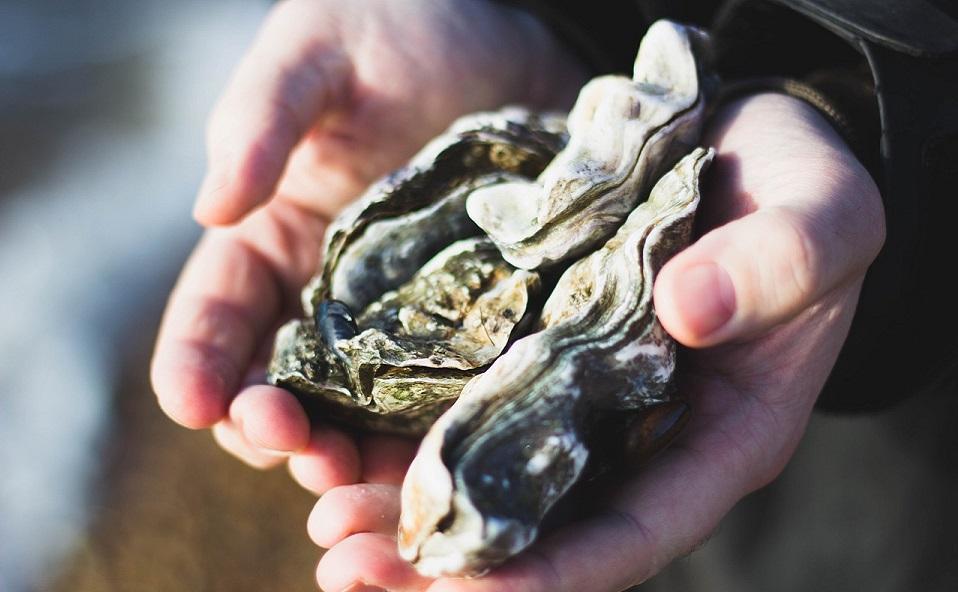The Oyster: Chesapeake Bay’s Humble Hero
When you think of the Chesapeake Bay, chances are you picture its shimmering waters, picturesque shorelines, and maybe a blue crab or two. But let's not overlook the true, unassuming champion of this iconic estuary: the oyster. Yes, the oyster. That awkwardly shaped, perpetually damp mollusk that somehow manages to wear a pearl and a half-shell better than most of us wear a tailored suit.
Nature’s Cleanup Crew
Oysters are the ultimate multitaskers of the marine world. Each one can filter up to 50 gallons of water a day. That’s right—these little bivalves are basically the Brita filters of the Bay, working tirelessly to keep the waters clean while asking for nothing in return except a cozy spot to settle down. They're like the overachieving friend who insists on tidying up your apartment after brunch.
And the Bay needs all the help it can get. Runoff, pollution, and overfishing have made the Chesapeake a bit of a fixer-upper over the years, but oysters are like its cleaning service, constantly scrubbing the ecosystem and helping aquatic life thrive.
From Sea to Table (and Back Again)
Let’s not forget their culinary contributions. The Chesapeake Bay oyster is a delicacy, with a salty, buttery flavor that seafood lovers rave about. Whether you like them raw, fried, or swimming in a stew, they bring a taste of the Bay to every bite. Oysters Rockefeller? More like Oysters Chesapeake—and they’re rocking it.
Here’s the cool part: even their empty shells aren’t wasted. Restoration efforts are using discarded shells to create new oyster reefs, giving future generations of mollusks a place to call home. Talk about recycling goals.
A Comeback Story
The Chesapeake Bay oyster has had a rough go of it. Overharvesting, disease, and habitat loss have all taken their toll. At one point, their population was down to just 1% of historical levels. But oysters are nothing if not resilient. Thanks to conservation projects and aquaculture innovations, they’re staging a comeback. With every reef rebuilt and oyster planted, the Bay edges closer to its former glory.
Ode to the Oyster
So here’s to the oyster: modest yet mighty, slimy but sensational. It’s not just a filter feeder—it’s a symbol of hope for the Chesapeake Bay. Next time you slurp one down, remember you’re not just enjoying a tasty treat—you’re toasting a true environmental MVP.
Give it up for the Chesapeake Bay oyster, folks. It’s shucking awesome.
Oysters: The Unsung Heroes of the Chesapeake Bay
Ah, the humble oyster—a mollusk that might seem like an odd celebrity, but in the Chesapeake Bay, it’s a rock star. These bivalves are more than just a delicious addition to happy hour; they’re the backbone (or shell?) of an entire ecosystem. Let’s dive into what makes the oyster the Bay’s MVP (Most Valuable Pearl, of course).
Nature’s Little Janitors
Think of oysters as the Bay’s cleaning crew, working tirelessly without complaining or charging overtime. One adult oyster can filter up to 50 gallons of water a day. That’s like a Brita filter on steroids. They suck in water, munch on algae and other particles, and spit out crystal-clear H₂O. Multiply that by millions of oysters, and you’ve got a self-sustaining filtration system that’s been doing its thing long before humans got involved.
Home Sweet Shell
Oyster reefs are like high-rise apartments for aquatic life. Crabs, shrimp, and fish all hang out in these shell-built skyscrapers. For critters, it’s the ultimate real estate: great location, plenty of food, and zero HOA fees. Even after oysters die, their shells provide a foundation for the next generation of oysters and a cozy habitat for countless other species.
The Comeback Kids
Once upon a time, the Chesapeake Bay oysters were so abundant you could practically walk across their reefs without getting your feet wet. Overfishing, pollution, and disease nearly wiped them out, but don’t count oysters out yet! Thanks to restoration efforts, oyster farming, and conservation, they’re making a comeback. Environmentalists and local communities are working together to rebuild reefs and bring these little heroes back in force.
Culinary Royalty
Oysters don’t just save the Bay—they save dinner parties, too. From raw to Rockefeller, there’s no wrong way to enjoy them. Plus, they’re sustainable, which means you can slurp down a dozen guilt-free (well, almost—just don’t forget your manners).
How to Help the Oysters Help Us
Want to be a friend to the Bay’s favorite bivalve? Support oyster restoration programs, recycle your shells, and buy local oysters to support watermen and sustainable aquaculture. The next time you’re at a seafood joint, raise a shell to these hardworking mollusks.
The oysters of the Chesapeake Bay are proof that even the smallest creatures can make the biggest impact. They’re not just seafood—they’re the unsung champions of clean water, thriving ecosystems, and delicious memories. Long live the oyster!
